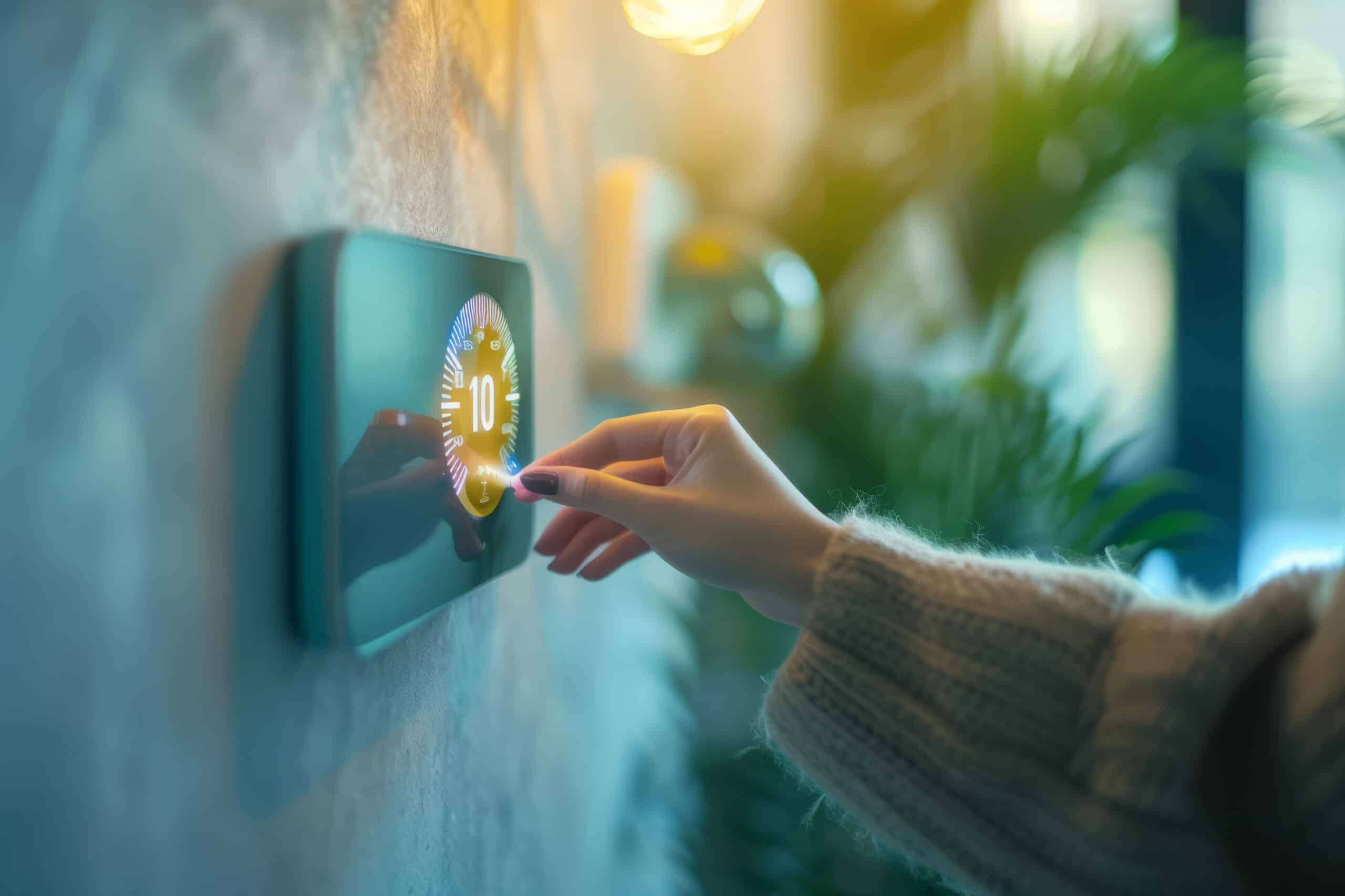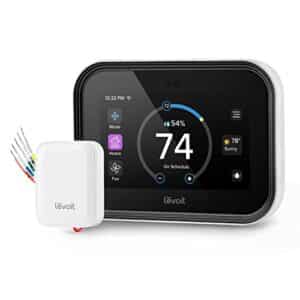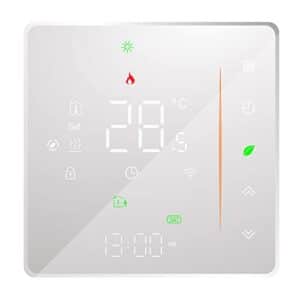How Do Smart Thermostats Work?
Key Takeaways
- Smart thermostats use advanced technology to regulate the HVAC system and provide comfort and energy efficiency.
- One of the major advantages of smart thermostats is the ability to control them remotely, offering convenience and personalized comfort.
- Smart thermostats are designed to optimize energy usage, resulting in significant cost savings on HVAC expenses, and they offer advanced features such as humidity control and customized schedules.
Smart thermostats have revolutionized the way we control the temperature in our homes. These innovative devices use advanced technology to regulate the heating, ventilation, and air conditioning (HVAC) system, providing comfort and energy efficiency. In this article, we will explore the working mechanism of smart thermostats and uncover the benefits they offer.
The Basics of Smart Thermostats
A smart thermostat is a device that connects to your home’s WiFi network and allows you to control your HVAC system remotely through a mobile app or web interface. It replaces the traditional thermostats found in many homes and offers advanced features that enhance temperature regulation and energy savings.
One of the key features of smart thermostats is their ability to learn your usage patterns. They use algorithms and machine learning to understand when you are at home and when you are away. This information is then used to adjust the temperature settings automatically, ensuring optimal comfort and energy efficiency. Over time, the smart thermostat adapts to your lifestyle, making precise adjustments based on your preferences and habits.
Remote Control and Accessibility
One of the major advantages of smart thermostats is the ability to control them remotely. With a mobile app installed on your smartphone or tablet, you can adjust the temperature from anywhere, even when you are not at home. This remote accessibility is incredibly convenient, allowing you to ensure a comfortable environment before you arrive or make changes while you are away.
Furthermore, smart thermostats offer the flexibility of controlling multiple zones within your home. This means that you can set different temperatures for different areas, ensuring personalized comfort and energy efficiency.
Energy Efficiency and Cost Savings
Smart thermostats are designed to optimize energy usage, resulting in significant cost savings on your HVAC expenses. By learning your patterns and preferences, they can automatically adjust the temperature settings to avoid unnecessary heating or cooling. For example, if you typically leave for work at 8 am, the smart thermostat will lower the temperature when you are away and raise it just in time for your return, saving energy during the day.
Some smart thermostats also offer additional energy-saving features such as geofencing. Geofencing uses your smartphone’s location to determine when you are approaching home or leaving. This allows the thermostat to adjust the temperature settings accordingly, ensuring comfortable temperatures while minimizing energy waste.
Advanced Features
Aside from temperature regulation and energy efficiency, smart thermostats offer a range of advanced features that enhance comfort and convenience. These include:
- Humidity Control: Some smart thermostats can monitor and adjust the humidity levels in your home, creating a healthier and more comfortable environment.
- Customized Schedules: You can create personalized heating and cooling schedules to match your lifestyle. Whether you want to wake up to a warm living room or have the temperature lower during the night, smart thermostats can accommodate your preferences.
Choosing the Right Smart Thermostat
When selecting a smart thermostat, there are several factors to consider:
- Installation Ease: Some smart thermostats require professional installation, while others can be easily installed by homeowners. Consider your comfort level with DIY projects or consult a professional if needed.
- App Quality: The user interface and functionality of the mobile app are crucial for a seamless experience. Look for apps that are intuitive, responsive, and offer a range of features.
- Smart Home Integration: If you have other smart devices in your home, such as smart lights or security systems, ensure that the smart thermostat is compatible and can be integrated into your existing smart home ecosystem.
- Voice Assistant Integration: Many smart thermostats can be controlled using voice commands through popular voice assistants like Amazon Alexa or Google Assistant. Check for compatibility with your preferred voice assistant.
- Data Provided: Some smart thermostats offer detailed energy consumption reports and insights, allowing you to monitor and optimize your energy usage. Consider the level of data provided and whether it aligns with your goals.
With a wide range of smart thermostat brands available in the market, it’s important to research and compare different options to find the best fit for your needs. Some popular brands include Amazon, Ecobee, Honeywell, Nest, and Wyze.
Conclusion
Smart thermostats are revolutionizing the way we control the temperature in our homes. With their ability to learn our patterns, remote accessibility, energy efficiency, and advanced features, they offer a range of benefits. By choosing the right smart thermostat, you can enhance comfort, save on energy bills, and contribute to a greener future.
Related Websites:
FAQs:
Q: What is a smart thermostat?
A smart thermostat is a device that allows you to easily control and manage the temperature in your home using advanced technology. It differs from traditional thermostats by offering features such as remote control, learning capabilities, and integration with other smart devices.
Q: How do smart thermostats work?
Smart thermostats work by connecting to your home’s Wi-Fi or Bluetooth network, allowing you to control them from your smartphone or other devices. They use machine learning algorithms to learn your preferences and automatically adjust temperature settings. These thermostats also have sensors to collect data on motion and temperature, optimizing energy efficiency. You can easily program schedules and temperature settings remotely.
Q: How do smart thermostats integrate with smart home systems?
Smart thermostats are compatible with popular voice assistants like Alexa and Google Assistant, allowing you to control them using voice commands. They can also communicate with other smart devices in your home, such as lights and security systems. This integration creates a connected smart home ecosystem, offering convenience and seamless automation.
Q: How do smart thermostats help with energy efficiency and cost savings?
Smart thermostats help optimize energy usage by automatically adjusting the temperature based on occupancy or weather conditions. This feature helps save energy and reduce utility bills. Some smart thermostats also provide energy usage reports and analytics, allowing you to monitor and track your energy consumption.
Q: Why should I consider using a smart thermostat in my home?
Smart thermostats offer convenience, energy efficiency, and potential cost savings. You can easily control your home’s temperature from anywhere using your smartphone. They learn your preferences and adapt to your schedule, saving energy and reducing utility bills. Integration with other smart devices creates a seamless and automated smart home experience. Consider the benefits of smart thermostats for a more comfortable and efficient home.






